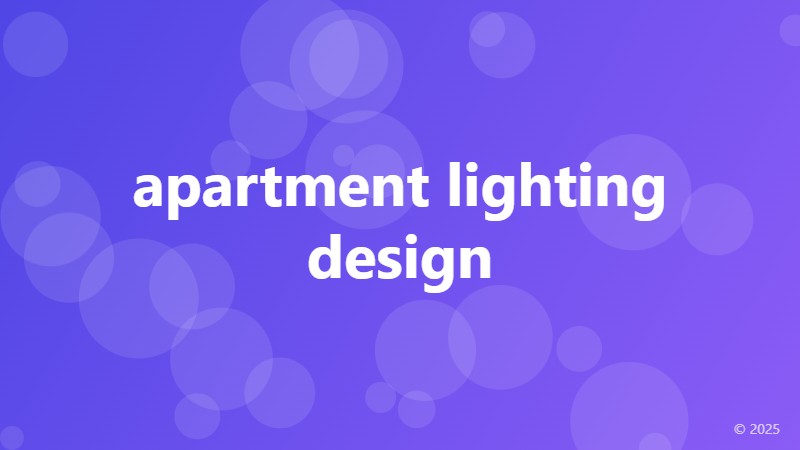apartment lighting design

The Importance of Apartment Lighting Design
When it comes to designing an apartment, lighting is often an afterthought. However, apartment lighting design is a crucial aspect of creating a functional and comfortable living space. Not only does it affect the ambiance and mood of a room, but it also impacts the overall aesthetic appeal and resale value of the property. In this article, we'll explore the key elements of apartment lighting design and provide tips on how to create a well-lit and inviting space.
Layered Lighting
A good apartment lighting design involves layering different light sources to create a functional and visually appealing space. There are three main types of lighting: ambient, task, and accent lighting. Ambient lighting provides overall illumination, task lighting focuses on specific areas, and accent lighting highlights decorative features. By combining these layers, you can create a balanced and harmonious lighting scheme.
Ambient Lighting
Ambient lighting sets the tone for the entire space. It can be achieved through overhead lighting, such as ceiling fixtures or recessed lights, or through table and floor lamps. Soft, warm lighting can create a cozy atmosphere, while brighter lighting can make a room feel more spacious. Consider using LED lights, which are energy-efficient and can be dimmed to suit your mood.
Task Lighting
Task lighting is essential for areas where specific activities take place, such as reading, cooking, or working. Under-cabinet lighting in the kitchen, pendant lights over the island, and desk lamps in the study area are all examples of task lighting. By providing focused lighting, you can improve visibility and reduce eye strain.
Accent Lighting
Accent lighting adds a touch of drama and sophistication to a room. It can be used to highlight architectural features, such as a fireplace or staircase, or to draw attention to decorative elements, like artwork or sculptures. Consider using track lighting or spotlights to create a sense of depth and visual interest.
Considerations for Apartment Lighting Design
When designing an apartment's lighting scheme, there are several factors to consider. First, think about the natural light available. If the apartment receives plenty of natural light, you may be able to reduce the amount of artificial lighting needed. Additionally, consider the color scheme and furnishings of the space, as these can affect the overall ambiance and lighting requirements.
Finally, don't forget about energy efficiency. Look for lighting options that are environmentally friendly and cost-effective. By incorporating energy-efficient lighting into your design, you can reduce your carbon footprint and save on utility bills.
Conclusion
A well-designed apartment lighting scheme can make all the difference in creating a comfortable, functional, and visually appealing space. By understanding the different layers of lighting and considering the unique needs of your apartment, you can create a lighting design that enhances your lifestyle and adds value to your property.